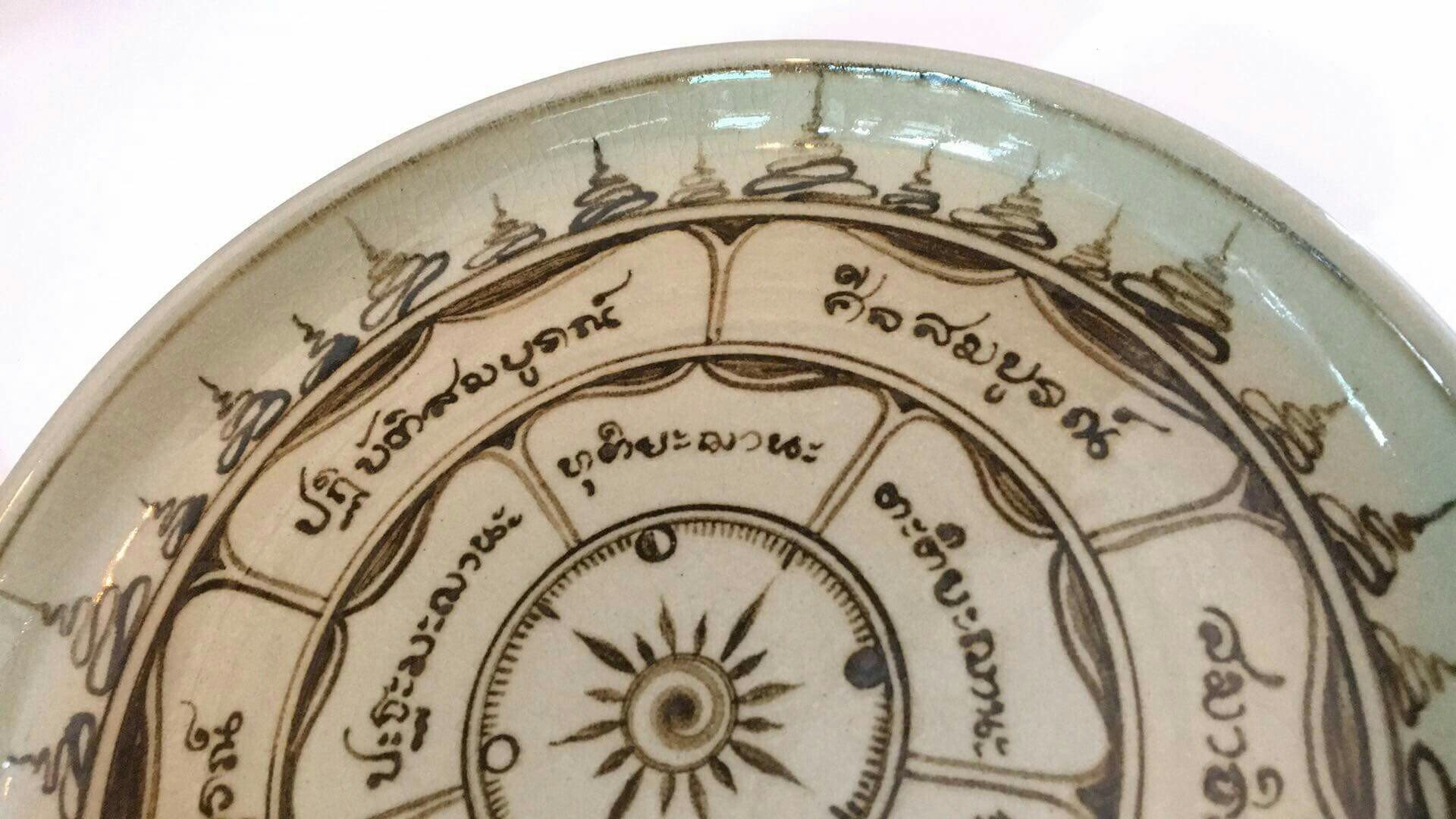Last updated: 29 Mar 2022 | 4644 Views |

Wiang Kalong pottery
Wiang Kalong pottery is underglazed ceramic pottery that features various food containers, dinner service, kitchenware and household objects such as dinner plates, footed trays, cups, vases, jars, khontho (long-necked water vessel), nam ton (water pots), as well as underglazed ceramic figures, such as human and animal figures. The major source of production is in Wiang Pa Pao District, Chiang Rai Province.
The production process begins with clay (kaolin) preparation. Kaolin is kneaded and shaped on a spinning wheel (spun by hand or foot), then the clay pieces are baked in a kiln, before they are decorated with underglaze pigments, glazed, and fired again.
Wiang Kalong pottery (and other glazed pottery) is used by the upper class people and therefore it reflects the long development of the culture that used it, testifying to the long settlement and secure foundation of a community in the area, which allowed the inhabitants to develop the technique and the production base of ceramic pottery. Significantly, the source of the principal raw material, kaolin, must be found in the area. Kaolin is resistant to high temperature and can be used to make high-quality pottery or porcelain.
The specific characteristics of Wiang Kalong pottery are the bright white clay and the black underglaze pigment that is found locally and used to decorate the clay pieces in various motifs such as fish, bird, and flower. The decorative designs look gracefully delicate, lively, and difficult to imitate. Wiang Kalong pottery is beautifully and thinly glazed. The glaze is clear, smooth and even, although it is not very shiny.
29 Mar 2022
11 Mar 2024
1 Aug 2018
30 Aug 2020